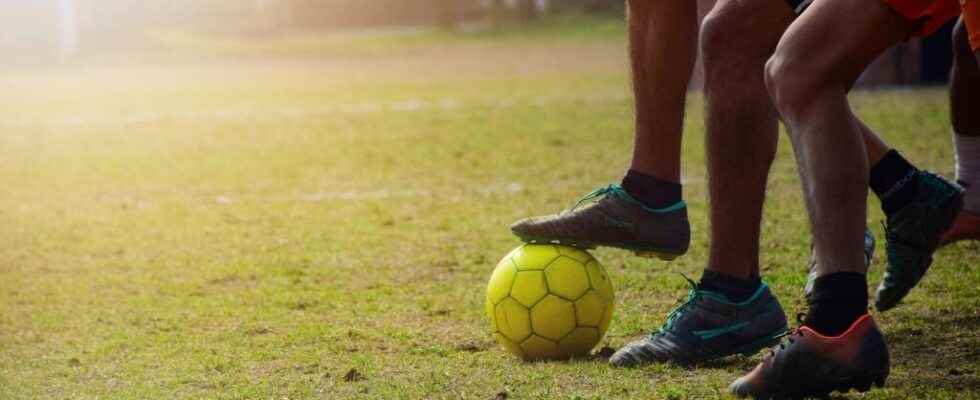Every week, Dr. Jean-Marc Sène, sports doctor, presents his sports column in Priorité Santé. This week, he tells us all about pubalgia, a diagnosis that is often mentioned when an athlete complains of pain in the pubic region.
What is pubalgia?
Pubalgia is a pain of gradual onset whose seat is the lower abdomen, the pubis, or even the adductors. Indeed, in pubic disease (another name for pubalgia) there is an inflammation of the pubic symphysis, which is a practically immobile joint in front of the pelvis next to the bladder. It is frequently found in footballers.
Clinicians generally distinguish under the term pubalgia, three clinical forms correlated with anatomical lesions:
- muscle damage to the abdominal and/or adductor muscles;
- weakness of the abdominal wall with involvement of the inguinal canal;
- pubic osteoarthropathy, corresponding to bone and joint damage to the pubic symphysis and its appendages
The pain associated with pubalgia is progressive. They begin with occasional discomfort during sports practice. They intensify and then become chronic. The pain becomes uni or bilateral and persistent, radiating to the lower abdomen and the inguinal area (groin), even to the adductors.
How to explain this painful syndrome?
Pubalgia generally occurs in the context of intensive sporting activity, a source of repeated microtrauma at the level of the abdomino-inguino-pubic junction. Its precise pathophysiology is not yet the subject of clear consensus, but most specialists consider that the presence of a muscular imbalance between the abdominal strap and the adductor muscles is the cause of the major appearance of the pathology.
The main factor predisposing to the onset of pubalgia is instability of the pelvis during sports, linked in particular to poor muscle coordination. This is induced by the presence of anatomical and biomechanical imbalances that are found mainly in people who may present:
- pelvic anteversion;
- asymmetry in the size of the lower limbs;
- lumbar lordosis;
- a strong and shortened musculature of the adductors, associated with a lesser development of the abdominals.
Pubalgia mainly affects male athletes (amateurs or professionals) subjected to intensive physical activity, characterized by technical gestures and movements involving strong asymmetrical constraints.
There are also a number of factors favoring the appearance of the pathology during sports practice, such as:
- the use of unsuitable equipment or a sudden change of equipment (shoes, ground, etc.);
- a state of overtraining: as soon as there is fatigue, there is a risk of injury for the athlete. Recovery is an integral part of training;
- an inadequate lifestyle in the context of an intense and daily sports practice (insufficient sleep, food, hydration);
- the presence of an infectious focus such as dental abscesses can also contribute to an imbalance of the spine.
How do you know if you have pubalgia?
Pubalgia presents a complex clinical picture with a symptomatology varying according to the patients and the sports practices.
The pains are described in the inguino-pubic region unilaterally or bilaterally, but they can also radiate to the adductors, or even to the level of the abdominal wall and the genital organs.
During his examination, the practitioner takes into account the patient’s symptoms, will examine him carefully, studying any predisposing factors: posture, muscle imbalance, lumbar lordosis, leg length asymmetry, pelvic tilt, etc.
Depending on the suspected clinical form, additional imaging tests may be necessary in the diagnosis of pubalgia:
- frontal x-ray of the pelvis;
- MRI of the pelvis;
- ultrasound.
How to cure pubalgia?
The treatment of pubalgia must combine a reduction in physical activity, even complete rest, and the implementation of a progressive rehabilitation program. Its overall duration varies from 2 to 6 months depending on the clinical form and its level of severity.
Rehabilitation may include muscle strengthening, stretching, physiotherapy or even osteopathy. It should allow the patient to regain muscle balance to obtain optimal stabilization of the pelvis when practicing sports.
After completing this phase of rehabilitation and provided that they no longer feel any pain, the patient can gradually resume their sport.
Depending on the patient’s clinical presentation, some doctors recommend medical treatment aimed at reducing pain through the use of anti-inflammatories, muscle relaxants or even mesotherapy. Infiltrations of local anesthetics and corticosteroids are more marginal and used in case of severe and persistent symptoms.
In case of failure of conservative treatment or in severe cases, surgery is sometimes considered, especially in case of pathology in the abdominal wall. Different interventions can be proposed.
